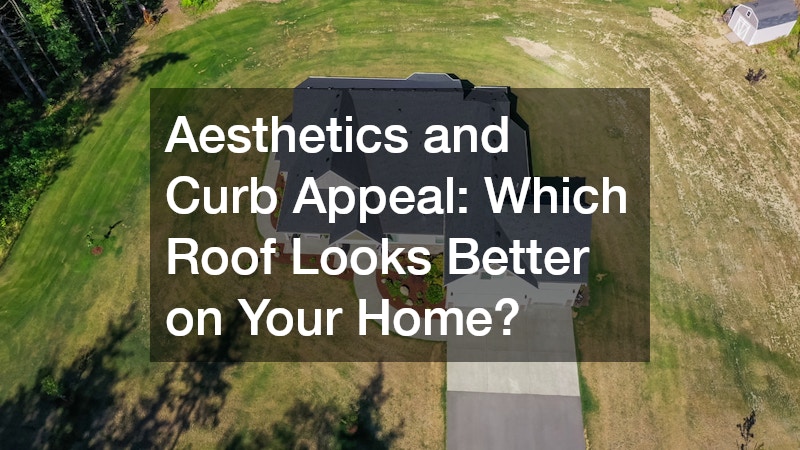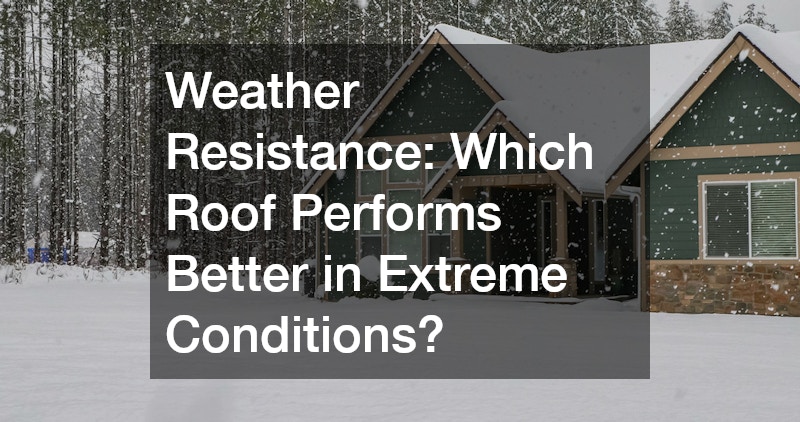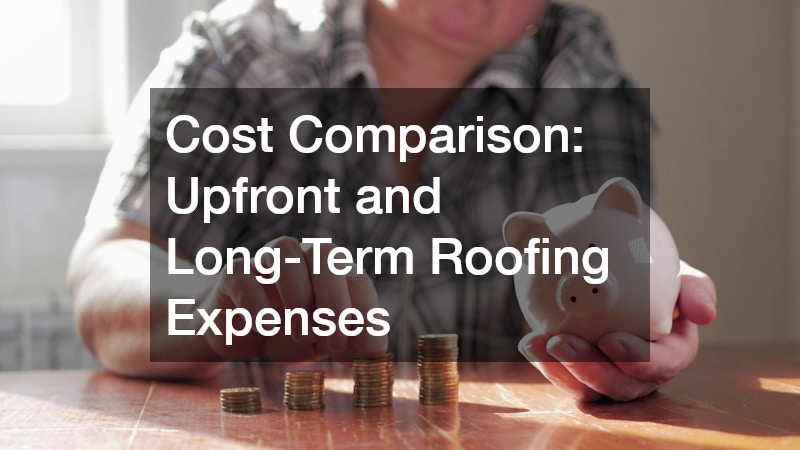Metal vs. Shingle Roofing: A Complete Breakdown for Every Home
When it’s time to replace your roof, the big question always comes up: metal or shingles? Both options have loyal fans and plenty of pros and cons. Whether you’re drawn to the modern look of metal roofing or the traditional charm of shingles, it’s important to understand how each one performs in terms of durability, energy efficiency, and cost. This guide breaks it all down in plain English so you can make a confident choice for your home.
Understanding Roofing Basics: Metal and Shingle Roofing Explained
Let’s start with the fundamentals. Metal roofing typically comes in large panels or interlocking tiles made from steel, aluminum, copper, or zinc. It’s known for being sleek, durable, and long-lasting. Residential metal roofing has come a long way from the old “barn roof” stereotype — today’s options include stylish finishes that mimic slate, tile, or even wood shake.
Asphalt shingles, on the other hand, are the most common roofing material in the U.S. They’re affordable, easy to install, and come in a wide range of colors and textures. Shingle roofers often recommend them because they balance price and performance for many homeowners.
Both materials can be installed by professional roofing contractors, but each requires a different approach. Metal roofs need specialized tools and experience, while shingle roofs can be handled with basic hand tools and straightforward techniques.
Aesthetics and Curb Appeal: Which Roof Looks Better on Your Home?

Your roof plays a huge role in your home’s curb appeal. The right choice can enhance your property’s overall look — and even its resale value. A well-designed roof can transform an ordinary exterior into something eye-catching, tying together your siding, trim, and landscaping for a cohesive appearance.
-
Metal roofs are perfect for modern or farmhouse-style homes. They offer clean lines, reflective finishes, and customizable colors. You can go bold with black or charcoal, or keep it natural with a copper or zinc patina that ages beautifully over time. Many homeowners choose standing seam panels for a sleek, contemporary touch that also boosts long-term home value.
-
Shingle roofs tend to fit best with traditional or suburban-style houses. They come in earthy tones like brown, gray, and slate, helping homes blend into the landscape. Dimensional shingles can even mimic more expensive materials like cedar or slate, giving you a high-end look without breaking the bank.
If you’re unsure which style complements your home’s architecture, talk to a roofing contractor who can show samples and digital renderings. They’ll help you visualize how different materials and colors affect curb appeal and ensure your choice aligns with your neighborhood’s style.
And don’t forget the little details that enhance aesthetics — like new trim paint that matches your roof color. Together, these elements can make your home look refreshed, polished, and perfectly balanced from the street.
Durability and Lifespan: How Long Do Metal and Shingle Roofs Last?
This is where metal roofing really shines. A properly installed metal roof can last 40 to 70 years, depending on the material and climate. That kind of longevity makes it one of the best long-term investments you can make for your home. In contrast, most asphalt shingle roofs last around 15 to 25 years before needing replacement, though high-quality architectural shingles can stretch that lifespan with proper care.
Metal Roofing Advantages:
-
Resistant to cracking, warping, and corrosion.
-
Can withstand high winds and heavy rain.
-
Doesn’t rot or attract pests.
-
Minimal maintenance required over decades.
Shingle Roofing Advantages:
-
Easier to repair — damaged shingles can be replaced individually.
-
Performs well in moderate climates.
-
Lower initial investment for budget-conscious homeowners.
-
Wide variety of styles and colors to match any home.
That said, longevity isn’t just about the material — proper installation is everything. Even the best roof can fail prematurely if corners are cut during setup. That’s why it’s crucial to work with residential roofing contractors who have experience with your chosen material and understand your local weather patterns. They’ll ensure correct ventilation, flashing, and sealing — all of which directly affect how long your roof lasts.
Quality installation by experienced roofers, paired with consistent maintenance like cleaning debris and checking for small leaks, can easily add years to the life of either roof type. When done right, your roof not only protects your home but also keeps it looking great for decades.
Weather Resistance: Which Roof Performs Better in Extreme Conditions?

If you live in an area with harsh weather — think heavy rain, strong winds, or snow — your roof’s resilience matters more than ever. Choosing the right material can mean the difference between minor upkeep and major repairs after a storm.
Metal roofs are practically built for extreme conditions. They shed snow easily, resist hail damage, and handle wind gusts up to 140 mph or more. Because of their interlocking panels and durable coatings, they’re less likely to lift or crack under pressure. They’re also fire-resistant, which is a major advantage in wildfire-prone regions or homes located near wooded areas.
Shingle roofs, while durable in normal conditions, can be more vulnerable to strong winds or heavy ice buildup. Missing or curled shingles can lead to leaks, especially around edges and valleys. However, modern high-performance shingles with reinforced backing can offer better protection than older versions.
It’s worth noting that many roofing companies now specialize in storm-resistant materials and upgraded installation techniques. These pros can recommend impact-rated shingles, underlayments, and fasteners designed for your specific climate, giving your roof a better chance of withstanding the next big storm.
Pro Tip:
Pair your roof with seamless gutters to prevent water buildup and foundation damage. They work well with both roofing types but are especially beneficial with metal roofs that channel rain quickly. Keeping gutters clean and clear of debris ensures that water flows safely away from your home, no matter how heavy the downpour.
Energy Efficiency: How Each Roof Impacts Your Utility Bills
Your roof isn’t just a weather barrier — it plays a major role in how your home stays cool or warm throughout the year. In fact, roofing materials can influence your energy bills more than you might think.
Metal roofing reflects sunlight instead of absorbing it, keeping your attic and home noticeably cooler during hot months. This reflective quality helps reduce the strain on your air conditioning system, leading to energy savings of up to 20% or more in the summer. Some panels even come with advanced reflective coatings or “cool roof” finishes that boost efficiency by bouncing more UV rays away. Another hidden bonus? Metal roofs cool down quickly after sunset, so they don’t hold residual heat overnight.
Asphalt shingles, on the other hand, tend to absorb and retain heat. That can make your home warmer in the summer — not ideal if you live in a sunny or tropical region. However, newer energy-efficient shingles are available, made with light-reflecting granules or special pigments that reduce surface temperature. These “cool roof” shingles can help lower cooling costs without sacrificing the traditional shingle look many homeowners love.
Beyond surface temperature, insulation and ventilation play a big part in overall efficiency. A well-ventilated attic allows hot air to escape, keeping your home comfortable no matter what type of roof you have. Pairing proper insulation with an energy-efficient roof can create a balanced system that cuts utility costs all year long.
If you’re planning to add solar panels, metal roofs are a fantastic match. Their strength makes it easy to mount solar brackets without penetrating too many layers, and since metal roofs often last longer than solar systems, you won’t have to worry about replacing the roof before the panels reach the end of their lifespan. Shingle roofs can support solar panels too, but they may require additional mounting hardware or earlier roof replacements over time.
When you combine the right roofing material with good insulation and proper attic airflow, you’ll enjoy not just lower energy bills — but also a more comfortable and eco-friendly home.
Installation and Maintenance: What Homeowners Should Expect

When it comes to installation, the process — and timeline — can differ significantly between the two. Understanding what to expect can help you plan better, especially when it comes to scheduling, budgeting, and coordinating with your contractor.
Metal roof installation usually takes longer and requires skilled labor. Each panel must be carefully measured, cut, and secured with precision to ensure a watertight seal. This is why working with an experienced roofing contractor is essential. They’ll have the right equipment and know-how to handle complex flashing and panel alignment, especially on homes with multiple roof angles or features like skylights. Although the installation process can take a bit more time, the result is a durable roof that needs very little upkeep over the years. Once it’s up, maintenance is minimal — just occasional inspections, checking fasteners, and clearing off debris.
Shingle roofing, on the other hand, is simpler and quicker to install, often completed in just a few days. It’s the go-to option for quick residential roofing projects or when weather conditions require fast turnaround. Shingles are lightweight and easy to cut, allowing roofers to work efficiently even on complex rooflines. However, over time, shingles may require periodic repairs or replacements due to curling, cracking, or granule loss caused by UV exposure and changing temperatures. Keeping up with small fixes early can prevent bigger — and more expensive — issues later.
Maintenance Tips for Both:
-
Inspect your roof at least twice a year, ideally in spring and fall.
-
Keep gutters clean to prevent water buildup and foundation damage.
-
Trim overhanging branches to reduce debris and minimize the risk of scratches or punctures.
-
Check flashing and vent seals regularly to ensure they remain watertight.
Even if you prefer DIY upkeep with basic hand tools, leave major repairs to professional roofers — especially for metal systems that require specialized fastening techniques or sealants. A small mistake, like overtightening screws or using the wrong sealant, can lead to leaks or corrosion over time. Having your roof professionally inspected every few years helps catch potential issues early, saving you both stress and money down the road.
Cost Comparison: Upfront and Long-Term Roofing Expenses

Here’s where most homeowners make their final decision — the cost.
Asphalt shingle roofs are more affordable upfront, averaging $5,000 to $9,000 for a standard residential installation (depending on size and location).
Metal roofs, on the other hand, typically range from $10,000 to $20,000 due to higher material and labor costs.
However, the long-term math often favors metal roofing. Its longer lifespan and minimal maintenance can make it more cost-effective over time. You’re less likely to need frequent repairs or full replacements.
Quick Comparison:
-
Metal Roof: Higher upfront cost, lower long-term maintenance.
-
Shingle Roof: Lower upfront cost, more frequent replacements.
If you plan to stay in your home for decades, metal roofing is a solid investment. But if you expect to move within 10–15 years, shingles might make more financial sense.
Environmental Impact: Recycling, Sustainability, and Waste Reduction
If eco-friendliness matters to you, metal roofing wins hands down.
Metal roofs are often made from recycled materials and are 100% recyclable at the end of their life. Some homeowners even participate in metal recycling programs to reduce waste during roof replacement.
Shingles, while improving in sustainability, are typically petroleum-based and end up in landfills. Some manufacturers are developing recyclable asphalt shingles, but the process isn’t as widespread yet.
Eco Benefits of Metal Roofing:
-
Reflective coatings reduce urban heat island effects.
-
Compatible with rainwater collection systems.
-
Less frequent replacements mean less waste overall.
Local Factors: Climate, HOA Rules, and Roofing Contractor Expertise
Before choosing a roofing material, think about where you live and who will install it.
-
Climate: Metal roofs perform best in hot, humid, or snowy regions. Shingles work well in mild to moderate climates.
-
Local codes and HOAs: Some areas restrict metal roofing due to glare or aesthetic rules.
-
Roofing expertise: Always hire local roofers contractor familiar with your region’s conditions. They’ll know which materials stand up best to your weather patterns.
It’s also smart to ask your roofer about warranties and ventilation recommendations. A quality install makes all the difference between a roof that lasts decades and one that leaks after a storm.
Final Verdict
So, which roof is right for your home — metal or shingles?
If you want longevity, durability, and eco-friendliness, metal roofing is hard to beat. It’s an investment that pays off over time and gives your home a sleek, modern edge.
If you’re focused on budget, traditional style, or quick installation, asphalt shingles remain a reliable favorite. They’re cost-effective and versatile enough to match almost any home design.
Either way, your best bet is to consult with local roofers who can evaluate your home’s structure, climate, and budget. Whether you go with a metal roof that can be recycled decades later or a shingle roof that gives classic charm, the right roofing choice will protect your home — and your wallet — for years to come.


